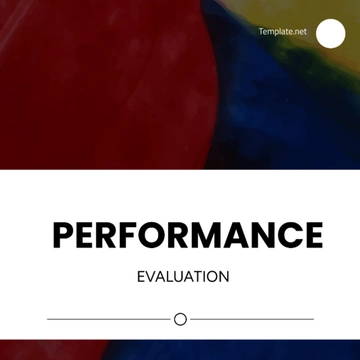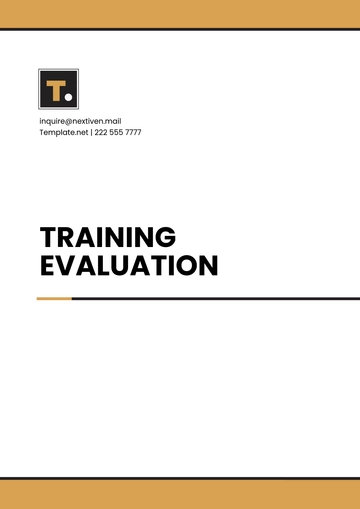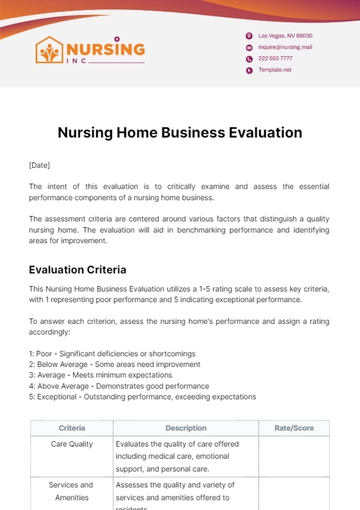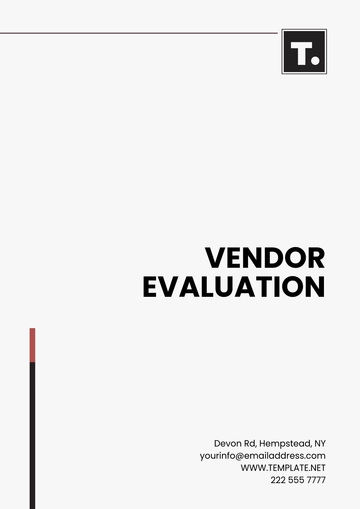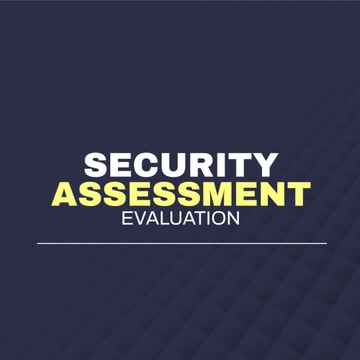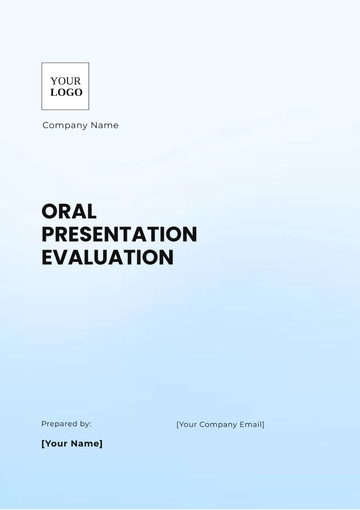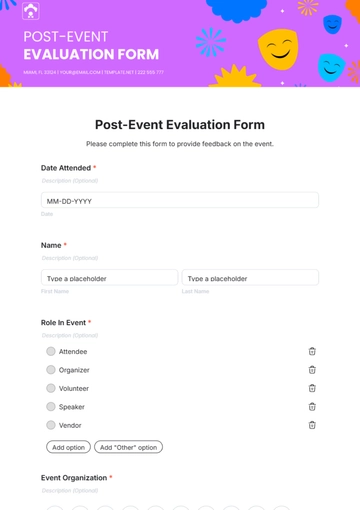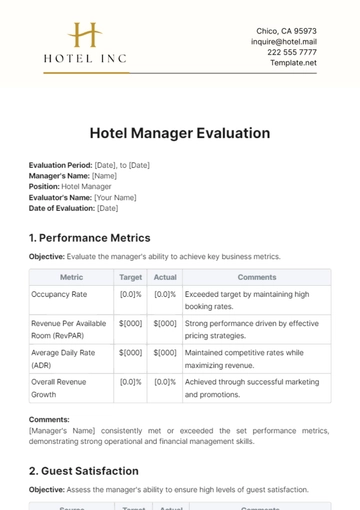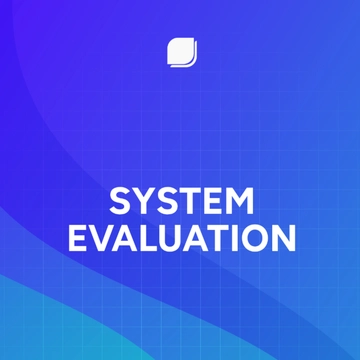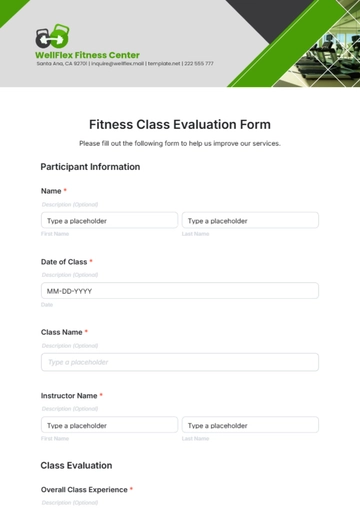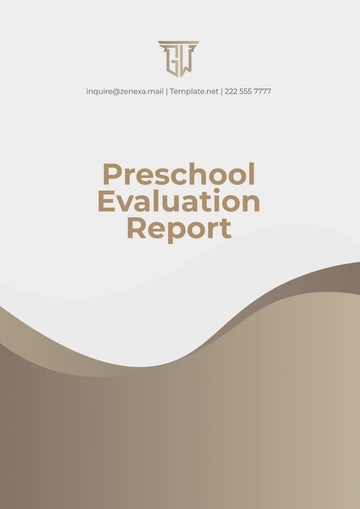Free Financial Reporting Evaluation Manual

Table of Contents
I. Introduction to Financial Reporting
II. Principles of Effective Financial Reporting
A. Accuracy and Integrity
B. Transparency and Clarity
C. Compliance and Standards
III. Review Process of Financial Statements
A. Income Statement Analysis
B. Balance Sheet Review
C. Cash Flow Statement Examination
IV. Key Performance Indicators and Ratios
A. Identification of Key Ratios
B. Benchmarking and Comparative Analysis
V. Reporting Findings and Taking Action
A. Documenting Findings
B. Recommendations for Improvement
VI. Contact Information
I. Introduction to Financial Reporting Evaluation
Financial reporting in [Your Company Name] serves as the cornerstone of our financial transparency and accountability. Accurate financial reporting is integral for effective decision-making, shaping investor perceptions, guiding management strategies, and ensuring compliance with regulatory standards. It enables stakeholders to understand our financial activities and results, fostering trust and confidence in our financial practices.
Scope of Financial Reports
Our financial reporting encompasses a comprehensive range of reports, each crafted to illuminate different aspects of the company's financial health. The Income Statement reveals our profitability by detailing revenues and expenses over a specific period. The Balance Sheet provides a snapshot of our financial position at a given point, outlining assets, liabilities, and shareholders' equity.
The Cash Flow Statement delves into how effectively we manage our cash, categorizing cash flows into operating, investing, and financing activities. Lastly, the Shareholders’ Equity Statement tracks changes in equity, reflecting the company's ability to generate value for its shareholders. Together, these reports offer a multi-dimensional view of our financial status, crucial for informed management and strategic planning.
II. Principles of Effective Financial Reporting
Effective financial reporting is fundamental to the integrity and success of [Your Company Name]. This section outlines the core principles that underpin our approach to financial reporting, ensuring accuracy, transparency, and compliance.
A. Accuracy and Integrity
In [Your Company Name], the accuracy and integrity of financial data are paramount. Every figure in our financial reports is meticulously verified and cross-checked to ensure its reliability and completeness. We understand that accurate financial data is the bedrock of trust and confidence among stakeholders.
It reflects the company’s true financial position, guiding critical business decisions and strategy. Our commitment to accuracy extends beyond mere numerical correctness; it encompasses the honesty and integrity of our financial disclosures, providing a true and fair view of the company's financial health.
B. Transparency and Clarity
Our financial reports are designed for clarity and comprehensibility. We strive to present financial data in a straightforward and understandable manner, free from unnecessary complexity or technical jargon that might obscure the key messages.
This approach ensures that stakeholders, regardless of their financial expertise, can easily grasp the essential information. Clear reporting aids in demystifying financial data, fostering an environment of transparency where stakeholders can make informed decisions based on a clear understanding of the company's financial status.
C. Compliance and Standards
Compliance with accepted accounting principles and legal standards is not just a legal obligation for [Your Company Name] but a commitment to best practices in financial reporting. We adhere strictly to internationally recognized accounting standards such as GAAP or IFRS, depending on the regulatory requirements.
This adherence ensures that our financial reports meet the highest standards of compliance, providing consistency and comparability of financial data both internally and externally. Regular training and updates on changes in accounting standards and regulations are part of our protocol to ensure our financial reporting remains compliant and up-to-date.
III. Review Process of Financial Statements
This section details the systematic approach for reviewing [Your Company Name]'s financial statements. Through meticulous analysis of the income statement, balance sheet, and cash flow statement, we aim to identify trends, assess financial stability, and evaluate liquidity and operational efficiency.
A. Income Statement Analysis
Evaluate revenue streams, cost of goods sold, operational expenses, and net income. Look for trends and anomalies that could indicate areas of success or concern.
Item | Amount | Percentage of Revenue | Year-over-Year Change |
|---|---|---|---|
Total Revenue | $5,000,000 | 100% | 0.1 |
Cost of Goods Sold (COGS) | |||
Gross Profit | |||
Operating Expenses | |||
Net Income |
B. Balance Sheet Review
Assess the company’s assets, liabilities, and equity. This analysis provides insight into the financial stability and liquidity of the company.
Item | Current Year | Previous Year | Change |
|---|---|---|---|
Total Assets | $10,000,000 | $9,000,000 | 0.11 |
Total Liabilities | |||
Shareholder's Equity | |||
Current Ratio | |||
Debt-to-Equity Ratio |
C. Cash Flow Statement Examination
Analyze cash inflows and outflows to understand the company’s ability to generate cash, fund operations, and maintain solvency.
Activity | Current Year | Previous Year | Change |
|---|---|---|---|
Operating Cash Flow | $2,000,000 | $1,800,000 | 0.11 |
Investing Cash Flow | |||
Financing Cash Flow | |||
Net Increase in Cash | |||
Free Cash Flow |
IV. Key Performance Indicators and Ratios
This section outlines the critical ratios used for evaluation and compares them against industry standards and historical data for comprehensive benchmarking.
A. Identification of Key Ratios
Include ratios such as Return on Equity (ROE), Debt-to-Equity (D/E) ratio, Current ratio, and Gross Margin. These metrics are crucial for assessing the company's financial health and operational efficiency.
Financial Ratio | Current Value | Formula | Purpose |
|---|---|---|---|
Return on Equity (ROE) | 15% | Net Income / Shareholder's Equity | Measures profitability from shareholders' perspective. |
Debt-to-Equity (D/E) Ratio | |||
Current Ratio | |||
Gross Margin |
B. Benchmarking and Comparative Analysis
Compare these ratios against industry standards and historical performance to gauge the company’s standing and identify areas for improvement.
Financial Ratio | [Your Company Name] | Industry Average | Previous Year |
|---|---|---|---|
Return on Equity (ROE) | 15% | 12% | 13% |
Debt-to-Equity (D/E) Ratio | |||
Current Ratio | |||
Gross Margin |
The evaluation of these key financial ratios demonstrates [Your Company Name]'s strong financial position relative to industry standards. Our ROE and gross margin surpass industry averages, highlighting our profitability and operational efficiency. While our D/E ratio is favorable, a slight increase from the previous year warrants careful monitoring.
V. Reporting Findings and Taking Action
Effective communication of findings and subsequent actions are critical in the financial reporting process. This section emphasizes the importance of comprehensive documentation of financial analyses and formulates actionable recommendations for improvements in financial management.
A. Documenting Findings
In our financial statement analysis for [Your Company Name], each significant finding is meticulously documented with precision. This includes:
Areas of Strength: Highlighting where the company excels, such as our substantial revenue growth, robust liquidity position, and other financial strengths.
Substantial Revenue Growth: Examining the factors contributing to revenue increases, such as market expansion, product innovation, or increased customer base.
Robust Liquidity Position: Assessing our cash flow efficiency and the ability to meet short-term obligations, indicating a healthy financial buffer.
Other Financial Strengths: Identifying additional strengths like superior asset management, cost-effective operations, and strong market positioning.
Improvement Needs: Identifying areas that require attention, including the rise in operational costs and other inefficiencies.
Operational Cost Management: Detailing the increase in operational expenses and identifying specific areas where cost optimization can be achieved.
Asset Utilization and Efficiency: Evaluating how effectively the company's assets are being used to generate revenue and suggesting areas for improvement.
Other Areas of Inefficiency: Highlighting additional aspects that could benefit from refinement, such as inventory management, staffing efficiencies, or technology upgrades.
Potential Risks: Noting concerns like the incremental rise in the debt-to-equity ratio and other potential financial hazards.
Debt-to-Equity Ratio Concerns: Analyzing the slight uptick in the debt-to-equity ratio and its implications for financial leverage and risk.
Market and Economic Vulnerabilities: Identifying external risks such as market volatility, economic downturns, or changes in consumer behavior.
Operational Risks: Assessing internal risks like supply chain disruptions, cybersecurity threats, or regulatory compliance issues.
This documentation approach ensures a transparent, detailed account of our financial health, serving as a critical tool for informed decision-making and strategic long-term planning.
B. Recommendations for Improvement
Arising from our financial assessment, we propose a series of strategic recommendations:
Revenue Augmentation: To bolster revenue channels, we advocate for an expansion into nascent markets and the advancement of our e-commerce platform, targeting regions with substantial growth prospects.
Cost Management: A thorough examination of our supply chain management procedures is suggested to unearth efficiencies, along with an audit of energy consumption to discern possible cost reductions.
Financial Oversight: Enhanced scrutiny of debt metrics is recommended, along with investigating refinancing alternatives to ameliorate debt expenses.
These targeted measures are designed to address specific areas of concern while capitalizing on opportunities. The objective is to reinforce [Your Company Name]'s fiscal standing and catalyze enduring economic expansion.
VI. Contact Information
If you have any inquiries about this manual or need further help in understanding any sections or terminologies, please contact [Your Company Email] or call us on [Your Company Number].
With this manual, our aim is to offer a clear and effective guide to evaluating financial reports. The integrated approach presented in this manual should embody our brand's unique identity and commitment to empowering our stakeholders with knowledge.
Revision date: [Year or onwards]
- 100% Customizable, free editor
- Access 1 Million+ Templates, photo’s & graphics
- Download or share as a template
- Click and replace photos, graphics, text, backgrounds
- Resize, crop, AI write & more
- Access advanced editor
Experience effortless financial reporting with Template.net's Financial Reporting Evaluation Manual. Expertly designed, editable templates guarantee accuracy and simplicity. Customizable features allow for suitability and precision. The nuanced elements editable in our Ai Editor Tool make creating comprehensive financial reports a breeze. Invest in smart reporting today with Template.net.

